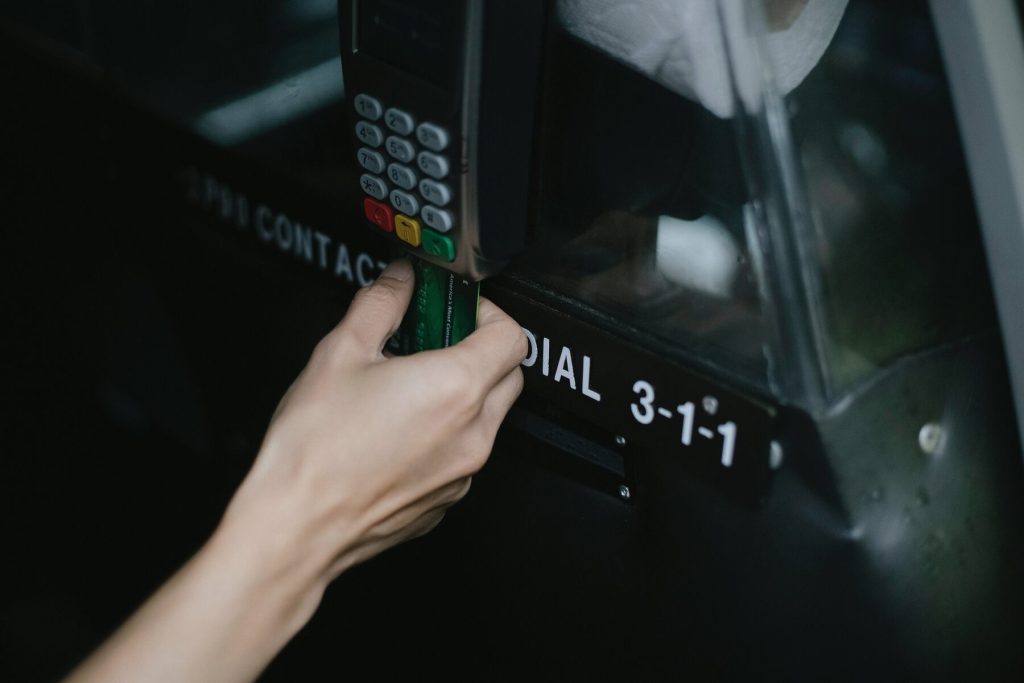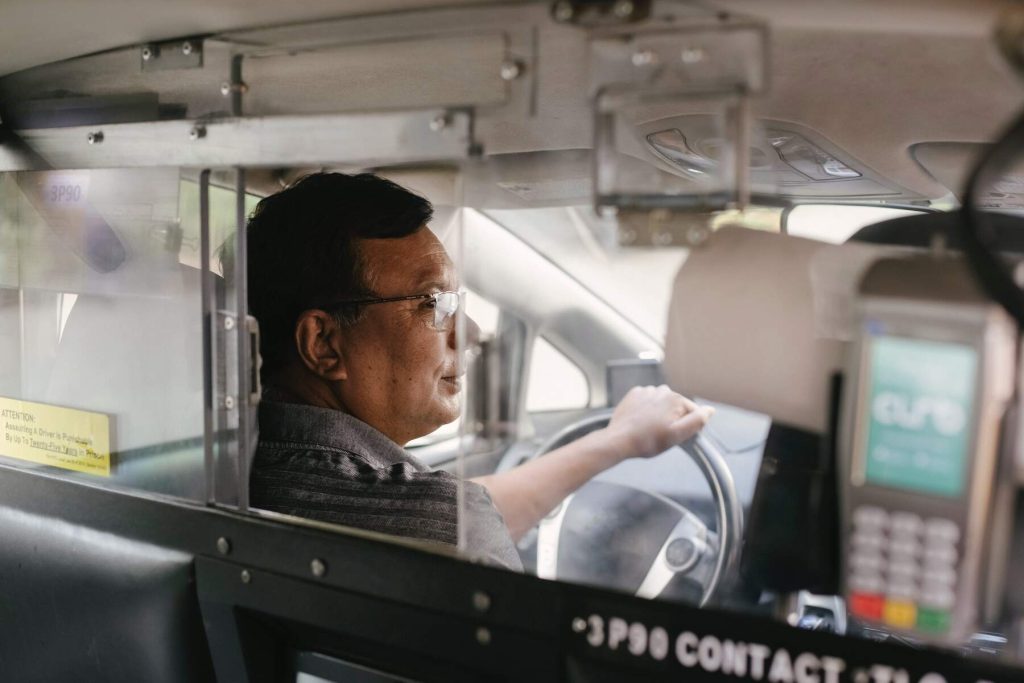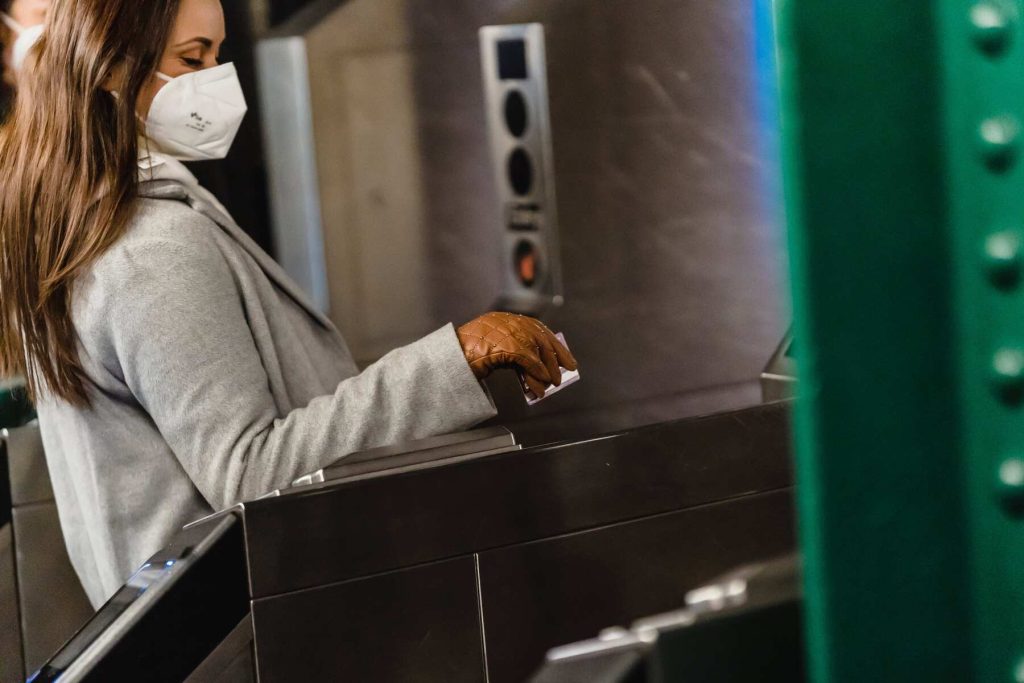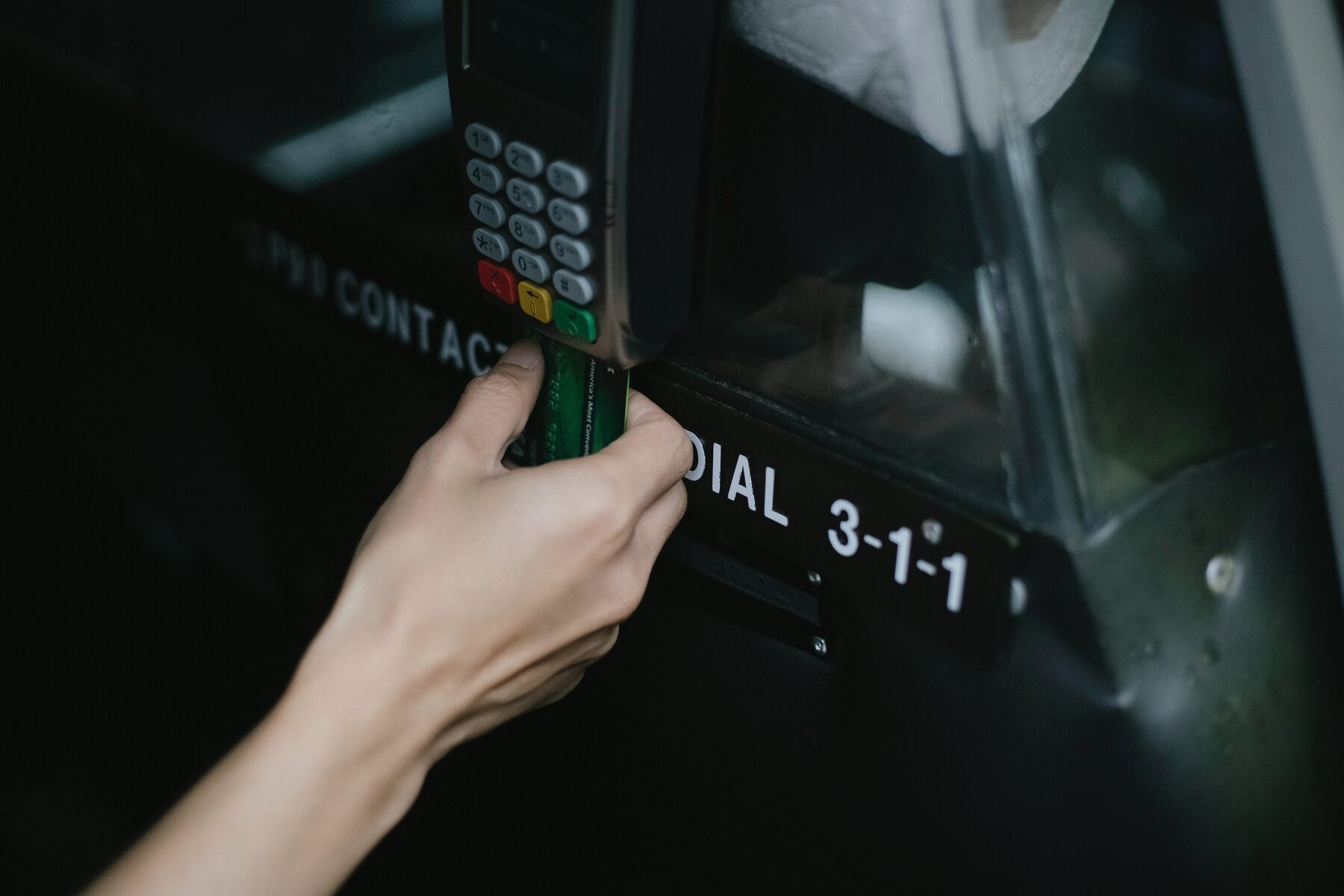Spending on commuting without gaining a considerable amount back is hard to stomach. I used to be frustrated, too, when I got the usual 1% return at MRT.
I have educated myself since then. I am sharing my findings for the best credit card for transit with you. Read on to find the silver lining you have been waiting for.
Our Top Transit Credit Card Recommendations
We spend a sizable chunk of our income on buses and subways. Moreover, we must spend regularly on gas and EV charging stations if we own a vehicle.

The same goes for rental automobiles for interstate or international road travel. I have compiled the best cards for all transit-related categories to narrow your search.
- Best Overall: Chase Sapphire Reserve
- Best for Transit With Low Annual Fee: Chase Sapphire Preferred
- Best for Family Road Trips: Blue Cash Preferred Card from American Express
- Best for Ground Transportation: US Bank Cash + Visa Signature Card
- Best for Uber Enthusiasts: Capital One SavorOne Rewards Card
Best Overall Card for Transit: Chase Sapphire Reserve
You can earn generous rewards while buying transit through this card. If you are fond of road trips and don’t own a vehicle, you benefit from Sapphire Reserve’s 10 points per dollar reward on all car rentals. It is the most lucrative return I have gotten compared to other travel cards and a great card for road trips.
Distinguishing Perks
I recommended it as the best card for Lyft users until December 2024. You get a complimentary Lyft Pink All Access for up to two years. You avail a 50% discount on all services in the third year. This offer compares only to Capital One SavorOne, which offers cash-back on Uber.
You can earn 3x points on trains and subways if you are a commuter. Dining and food delivery also earn you 3x points. Although the annual fee is $550, you can offset it with a $300 annual travel credit. It is a unique reward compared to other high-tiered cards. Although you can still have two Chase credit cards. However, you get the most out of Chase Sapphire Reserve by spending for these categories, even with a high annual charge.
Pros
- You earn 10x points on dining purchased through Chase, significantly increasing your bonus rewards. It relates to transit because you must eat during road or camping trips.
- You can earn on road trips, too, because car rentals get you 10x points back.
- You get 3x points back on subway fare. Also, you earn 3x points on food deliveries and dining booked without Chase Dining and paid for by Chase Sapphire. You are at an advantage if you spend some of your income on travel.
- You get a $300 annual travel credit that can offset your high annual fee or help you pay towards transit expenses. Very few cards offer this asset.
- Your life will become so much easier with two-year complimentary Lyft services. Moreover, you will get everything Lyft-related for 50% off in the third year of your subscription. However, remember to subscribe before December 31, 2024.
Cons
- You can redeem maximum points only through Chase Ultimate Rewards. It can be limiting for some people.
- The food and gas categories rewards are less than a few other travel cards.
- The annual fee is high. Although you can compensate for it with the annual travel credit, you still have to pay $250.

Best Card for Transit With Low Annual Fee: Chase Sapphire Preferred
I love Sapphire Preferred’s many benefits against only a $95 annual fee. You get five times back on every dollar you spend on travel booked through Chase. Although “travel” might only mean flights and hotel bookings, it is a blanket term for travel cards. You can earn the same from booking for subways, parking, or rentals.
Distinguishing Perks
You also get 3x points each for food takeout and grocery delivery services, though it does not include Walmart or Whole Foods. These categories also fall under the transit category because of long road trips. You need to buy food during travel, which is a great move to save money during road trips. Also, you need to have cooking essentials for a camping trip.
Chase Sapphire Preferred offers lucrative rewards compared to only a few other transit cards. You get 5x points on Lyft services until March 31, 2025. It is in contrast to the Lyft pink membership offer for Sapphire Reserve. However, you incur a 10% anniversary bonus that offsets the annual fee and can contribute to your reward pool.
Pros
- You get 10% of your year-round expenses back as an anniversary bonus. You can offset your annual fee with it and direct the rest towards Chase Ultimate Rewards for maximum value redemption.
- You get 5x points per dollar back on purchasing Lyft services until March 31, 2025, which is generous if you commute via cabs.
- You get 5x back on all transit. This allows you to accumulate more to spend freely commuting when redeeming your points.
- You get three times back for spending on food and online grocery shopping. This offer can turn your camping trip into an earning opportunity.
Cons
- You can redeem the best value points through Chase Ultimate Rewards. Otherwise, the 1.25 cents per dollar will decrease to one cent if you redeem through gift cards or cash back.
- The reward points you get for the travel category are not as unique as Sapphire Reserve, even if ranked high among the coveted travel cards.

Best Card for Family Road Trips: Blue Cash Preferred Card from American Express
You will love your family camping trips with a Blue Cash Preferred card from American Express. You get a 3% cashback on gas stations, which is the highest against other cards.
Although this offer applies to standalone stations only, you can get a further 3% because it is a bonus category. Also, you can increase your reward pool by getting a 3% return on MRT transit.
Distinguishing Perks
In my opinion, the most fantastic feature of this card is its 6% cash return on supermarkets, something rare for credit cards. Even though it is not applicable at Target or Walmart, you can use it at other stores to buy restaurant and retailer gift cards. Another trip-friendly feature is the 6% return for Disney+ and Hulu streaming. Your road trips can be more enjoyable and relaxing.
You might find the $95 annual fee relatively high compared to some cards without it. However, you can offset it easily by redeeming your cash back as the yearly statement credit. Also, you get $250 for spending $6,000 in the first year, which can offset the annual fee for a few months.
Pros
- You get 3% cash back on all transit and standalone gas stations. It can add generously to your rewards because commuting is a significant expense for most of us.
- You can redeem all your cash back as annual statement credit like a few other travel cards. It balances your cash flow and helps you to offset the annual fee.
- You get a 6% cash return on supermarket purchases all over the US. You and your family can get a bite anytime you stop at a superstore during your road trips.
- Your lengthy commutes can become bearable and shorter due to the 6% cash back on Disney+ and Hulu streaming.
- You get a $250 welcome bonus after spending $6,000 in the first year. You can use it to pay the annual fee for a few months and earn more.
Cons
- It has a high annual fee, which can dampen your enthusiasm because there are travel cards that incur a $0 annual charge.
- The 3% cash back for transit has a lower value in contrast to the 3x points per dollar Chase Sapphire Reserve offers.

Best Card for Ground Transportation: US Bank Cash + Visa Signature Card
First, you don’t have to pay an annual fee for US Bank Cash+. Also, you are exempt from incurring APR for the first 15 months. You can use this period to accumulate cash-back rewards.
You have to pay a 5% balance transfer charge, though. That and a 3% foreign transaction fee can greatly increase your payable amount. However, it is common for travel cards like Chase to incur foreign transaction fees.
Distinguishing Perks
I was overwhelmed by the bonus category customization this card offers. Where other cash-back cards are not flexible for rotating categories, US Bank Cash+ is. You can choose two categories for a 5% return for a $2,000 cap. It is generous against a $1,500 limit other cards offer. You can choose “ground transportation” for this whopping 5% reward.
Furthermore, you get to choose your pick from everyday categories, too. You get a 2% return if you choose gas and EV charging stations for this one. You can choose restaurants and grocery stores if you plan to cook or make multiple stops during your road travel.
Finally, the feature that I liked the most was a 5% cash back on car rentals. I accumulated a lot of cash while traveling interstate with rental vehicles.
Pros
- You get the most generous bonus category structure against other reward cards. You can choose two categories to avail of a 5% cash return. You can opt for ground transportation, which includes trains, buses, and cars.
- You get a spending cap of $2,000 for rotating categories. It is higher than most cash-back cards that cap up to $1,500.
- You also get to choose an everyday category for a 2% capless return. You can choose gas and EV charging stations to ease your routine commute.
- You get a flat rate of 5% cash back on car rentals. You can collect sizable cash if you are a regular cab user.
- You have to pay a $0 annual fee for this card. You get more room to earn if you don’t keep a statement-to-statement balance and incur 0% APR.
Cons
- You get a lower cash return percentage on gas and EV stations than other travel cards.
- You have to pay the maximum balance transfer fee, which can damage your earnings.

Best Card for Uber Enthusiasts: Capital One SavorOne Rewards Card
You will love the welcome offer Capital One SavorOne Rewards card offers. You get a $200 credit for spending $500 within the first three months. It compares favorably against other cards that set a high spending limit during the initial period.
Distinguishing Perks
As an Uber lover, I love the 10% cash back on Uber rides until November 14, 2024. This offer relates only to Sapphire Reserve’s Lyft offer. You can ride Uber for an enormous reward for almost a year if you choose it now.
Moreover, you get 10% back on Uber Eats and 8% back on eateries. Your next road trip can’t be more fun! Also, you get 3% back if you want to pick up groceries while traveling. All the other purchases earn 1%.
Pros
- You get 10% cashback on Uber rides and Uber Eats, turning your commute into an earning opportunity.
- You get a $200 bonus after the first three months. You can spend it on transit to earn more.
Cons
- The flat rate rewards are not exceptional like other travel cards. You can do better.
Features to Consider Before Getting the Best Credit Card for Transit
You will find several cards that offer transit-specific offers. However, only some options are available to you. Consider these features before choosing your perfect match.
| Transit Rewards | Redemption Value of $300 on all transit | Annual Fee | |
| Chase Sapphire Reserve | 10x points on car rentals; 10x points on food services booked through Chase Dining; 3x points on all transit; free Lyft services for two years, 50% off for the third year; $300 annual travel credit | $13.5 when redeemed through Chase Ultimate Rewards | $550 |
| Chase Sapphire Preferred | 5x points on all transit; 5x points on Lyft services until March, 2025; 3x points on food services; 10% of year-round expenses as anniversary bonus | $18.75 through Chase Ultimate Rewards | $95 |
| Blue Cash Preferred Card from American Express | 6% back on supermarket purchases; 3% back on standalone gas stations; 3% back on all transit | $9 | $95 |
| US Bank + Visa Signature Card | 5% back on ground transportation (all transit) as a rotating category; 5% back on car rentals; 2% back on gas and EV stations as an everyday category; 2% back on restaurants | $15 | $0 |
| Capital One SavorOne Rewards Card | 10% back on Uber rides and Uber Eats; 8% back on tourist activities and eateries on Capital One Entertainment; 5% back on car rentals; 3% back on dining and grocery stores to grab a bite between road travel; 1% back on all transit | $3 | $0 |
Reward Value
You should evaluate how much you can optimize your cash back or reward points. Sapphire Reserve offers a maximum of 1.5 cents per dollar redemption value. If you spend $300 on transit, you get $13.5 back for 3x points.
Contrarily, you get $9 for 3% cash back in the same category with Blue Cash Preferred. Do your research thoroughly to get the most suitable card.
Card Type
The card type you select also affects the offers. You are more likely to get the best transit earnings with Chase travel cards like Sapphire Reserve or cash-back cards like SavorOne Rewards.
Remember not to opt for a card specific to one category, like secured cards. Kill two birds with one stone and earn through multiple channels.
Bonus Categories
Look for cards that offer quarterly categories if you can juggle that framework. Cards like US Bank Cash+ allow maximum flexibility in bonus categories with a high-ceiling spending cap. Go for such cards that offer bonuses and everyday rewards on transit categories.
Cumulative Card Fee
You must know your expenditures before you calculate your savings or earnings. Annual fees, balance transfers, and APR are the charges that can drain your reward pool if you do not plan carefully.
Look for cards that charge you as low as possible, or you can offset the payments with statement credit. Sapphire Preferred and Blue Cash Preferred are such examples.

Related Questions
Is Visa or Mastercard Better for Travel?
Visa is better for travel than Mastercard. Although both offer similar benefits, Visa surpasses Mastercard because of its emergency roadside assistance and travel protection. You can rely on Visa for immediate coverage if your rental vehicle encounters an accident or theft.
How Do I Activate My Credit Card for Transport?
You can activate your credit card for transport at any MRT station. You have to press your card at the e-reader on the general ticketing machine.
Can I Buy a Train Ticket With My Credit Card?
Yes, you can buy a train ticket with your credit card. You can enter your card number for payment if you buy a ticket online. Alternatively, you can swipe or press your card at the card reader manually if you get your ticket.
Conclusion
I declare Chase Sapphire Reserve the best overall card for transit. It has maximum rewards for all commuting categories. You can get the most out of it if you are a cab user. However, you can consider other cards from the list if you want less or no annual fee.
